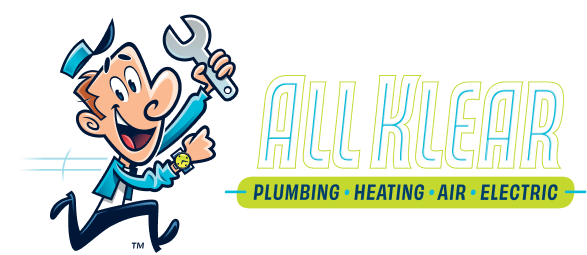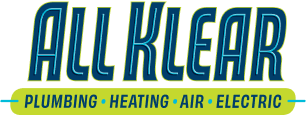The Insurance Information Institute estimates that power surges cause at least $1 billion in residential damages annually in the U.S. Homeowners and renters insurance often covers most of it. Still, many Americans have considerable out-of-pocket expenses and must navigate substantial challenges. The best way to protect your family and home is whole-home surge protection. Let’s explore why it’s such an important investment in your home.
Whole-Home Surge Protection
There are multiple types of surge protection. Three types, in particular, are notable for residential applications: Type 1, Type 2, and Type 3.
Type 1
A Type 1 surge protection device (SPD) safeguards against high-energy external surges. The installation must be outside the home’s electrical system. Electricians will often install it at the main distribution panel on the line side. The line side is where power enters the panel from the grid. Another option is installing it at the service entrance. Doing so extends protection to the electrical meter and other components outside the panel. Many Type 1 SPDs have a dual rating, and dual-rated SPDs can provide Type 1 protection, too.
Type 2
A Type 2 SPD safeguards against low-energy external and internal surges. In residential applications, an electrician will typically install it on the load side of the electrical panel. This is where electricity travels from the panel to appliances and devices. In some scenarios, it may be preferable to have a Type 2 SPD on the load side of the service entrance or at both points.
Type 1 and Type 2 SPDs function similarly. The main difference is the thresholds at which they detect a surge or spike. These devices generally have a metal oxide varistor (MOV). When a surge occurs, the resistance of the MOV drops dramatically and quickly. That allows excess energy to flow into the ground wire and dissipate in the earth.
Type 3
A Type 3 or point-of-use surge protector delivers local protection. These are often the last line of defense if there’s been a catastrophic surge event. Type 3 SPDs also protect appliances and devices from minor abnormalities that can occur within a home’s electrical system. A common example of these devices is the surge protector strips many households use for their computer and home entertainment equipment. There are also outlets with integrated Type 3 protection. That lets you plug in a laptop or charge a phone without worrying about having a surge protector.
Code Compliance
The National Fire Protection Associates (NFPA) maintains the National Electrical Code (NEC) as a federal standard. Most state and local governments use the NEC as the basis for their building codes. The NFPA updates the NEC every three years. It added Type 2 surge protection as a residential requirement as of January 1, 2023. Homes built after that point must have it. Homeowners do not have to update older homes simply because the NEC updated. That said, you may have to update if you need a permit, such as for a whole-home generator.
Whole-Home Generators
Power outages cost American homeowners even more than power surges every year. An extended power outage may result in:
- Spoiled food
- Lost productivity
- Frozen or burst pipes
- Alternative housing needs
- Sump pump failure and flooding
To protect themselves, many homeowners have upgraded their properties with standby generators. These systems burn fuel to power refrigerators, heating, lighting, well pumps, and more. Many home insurance companies offer discounts for generators as well.
Home Insurance
Home insurance typically covers damage from power surges. There is usually standard coverage, and there may be insured perils as well. Before installing a whole-home surge protector, contact your insurance company. Many companies offer premium discounts because they’re less likely to have to pay out on the standard coverage. You may also have the option of lowering your premium by dropping insured perils. Ensure you understand the requirements your surge protection equipment must meet to be eligible for the savings.
Lightning Strikes
There are two types of lightning strikes: indirect and direct. Indirect lightning strikes are far more common, and Type 2 and dual-rated Type 1 SPDs protect against them. Type 3 SPDs provide limited protection against them as well. All Type 1 SPDs protect against direct lightning strikes. While not a common occurrence for homes, they can be devastating when they do occur.
Irregular Grid Power
Anomalous power from the grid can cause substantial damage to a home’s electrical system. An example is a blown transform that sends a high-energy surge to nearby homes. Type 1 SPDs provide the highest level of protection against such surges. Both Type 2 and Type 3 SPDs provide limited protection against them.
Internal Surges and Spikes
External surges are not the only cause for concern. Surges and spikes can originate on the load side of the electrical panel as well. Appliances that may cause such surges include standby generators, air conditioners, heat pumps, and heat pump water heaters. A Type 2 SPD prevents such surges from reaching the electrical panel and beyond it to other appliances and devices.
Surge vs. Spike
Spikes and surges are both voltage increases, and the main difference is length. Surges will generally last several milliseconds or longer while spikes are more transient. Spikes typically have internal rather than external sources. While they’re not as serious as surges, they can damage devices. Type 2 SPDs provide the best protection against them.
Fires and Other Electrical Hazards
Electrical fires are the most common type of residential fire in the U.S. That said, they’re not usually caused by surges. Faulty wiring and overloaded circuits are far more common culprits. Still, if a power surge occurs repeatedly or for an extended period, it can cause a fire. Having an SPD will take a small chance and make it almost zero. It will also alert you if power surges are a frequent and ongoing problem.
Devices and Appliances
The biggest concern with both internal and external surges is your possession. If your home lacks protection, they can damage your electrical panel, wires, and fixtures. Significant surges can damage HVAC equipment, water heaters, and other major appliances. Even modest surges can damage computers, televisions, and many other devices. To best protect your possessions, pair Type 2 and Type 3 surge protection.
Long-Term Home Maintenance Costs
Whole-home surge protection is a relatively inexpensive home improvement. It will often pay for itself simply by limiting electrical repair and maintenance costs. In addition, a Type 2 SPD can easily last a decade or more in typical operating scenarios.
Property Value
The real estate industry estimates that whole-home surge protection increases resale value beyond the cost of the upgrade. Homes with surge protection are more appealing and don’t stay on the market as long. Likewise, residences with surge protection rent more quickly.
Whole-Home Surge Protection Installation in Springfield
All Klear is an electrical contractor located in Springfield, MO. Our company has specialized in residential electrical work in the region for over 15 years. We proudly employ licensed electricians who complete all installations and repairs to Missouri building codes. That includes electrical panels, Type 1 and Type 2 surge protection, outlets with integrated surge protection, and much more. Learn more about our products and services by calling or contacting us online at your earliest convenience.




